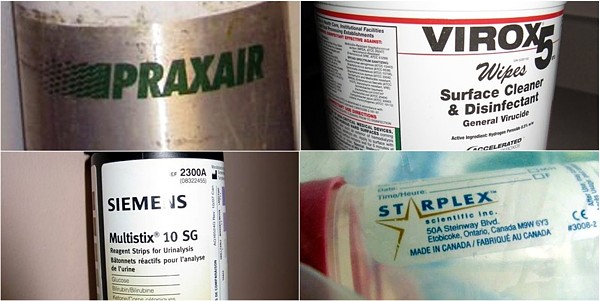The first Beg to Differ Branding Field Trip.
Last week, viagra order I blogged on Beg to Differ about the birth of my son. Thank you all for your best wishes and brilliant thoughts on this incredibly moving experience for my wife and other two kids. But on the silly side of my brain, doctor the whole 3 days in the hospital, troche I had lines from the classic “Machine that goes Ping” sketch from Monty Python’s the Meaning of Life going through my head. And I was struck by how heavily branded the hospital environment is. So here are a few branding “pings” from the life and death world of the hospital.

Something completely different
I think Branders need to be students of branding trends, and have a big streak of geekiness. And it’s always best to look at branding practices from an outsider’s perspective. So as a non-medical guy, all these brands were new to me. A few random comments are below.

There’s a surprisingly hard-sell retro throwback feel to a lot of these product names. And in the case of the “V-LOK CUFF” a design style that looks like it came out of the back of a comic book.
Interesting story: at one point, a nurse was putting an intravenous drip into my wife’s arm and asked me to grab what she called an “eye-hand” from the cupboard. I couldn’t find it until she held up a package and I realized she was talking about the “IV3000 1-HAND” above. In our case, the misunderstanding wasn’t serious, but I wonder if that little brand misunderstanding has ever led to more serious consequences. Branding matters!
 In a “serious” environment like a hospital, I’d expect muted, understated brand practices – heavy descriptive names and generic product numbers. But I was surprised how many of the product brands seemed to be using edgy or aggressive naming conventions. Notice a small sample of all the “X’s I found in brand names.
In a “serious” environment like a hospital, I’d expect muted, understated brand practices – heavy descriptive names and generic product numbers. But I was surprised how many of the product brands seemed to be using edgy or aggressive naming conventions. Notice a small sample of all the “X’s I found in brand names.

I especially like the “Stryker” beds I saw everywhere. Doesn’t that sound like the name of a hero from a cheesey pulp fiction thriller?
In the delivery room, the doctors and medical staff were giddy with excitement to try the “Rollbord” (above) which some were trying for the first time. I noticed that they didn’t call it a “SAMARIT” or even a “Samarit Rollbord” – even though the names are presented graphically at the same size. “Rollbord” is the dominant brand because it’s more useful.

This confused me. In the age of H1N1, I was diligently keeping my hands washed, and when I couldn’t, I would Purell them (note the verb). But the distributor of the hand-pumps above obviously tried to standardize the look and feel of the labels, even though they are different brands (and add French for a Canadian audience). The result? I kept reaching for the Purell when I needed soap and vice versa. In this case, the manufacturer’s branding would have been more useful.
What do you think?
Beg to Differ wants to hear from you:
- Any thoughts on these brands? What other branding trends do you see?
- Any perspectives on other medical industry brands?
- Do you like the branding field trip idea? Thoughts on other field trips we can take?
- Volunteers to lead guest expeditions?








![090701_russianigeria[1] 090701_russianigeria[1]](https://i0.wp.com/www.begtodiffer.com/wp-content/uploads/2009/07/090701_russianigeria1.jpg?resize=600%2C300&ssl=1)
